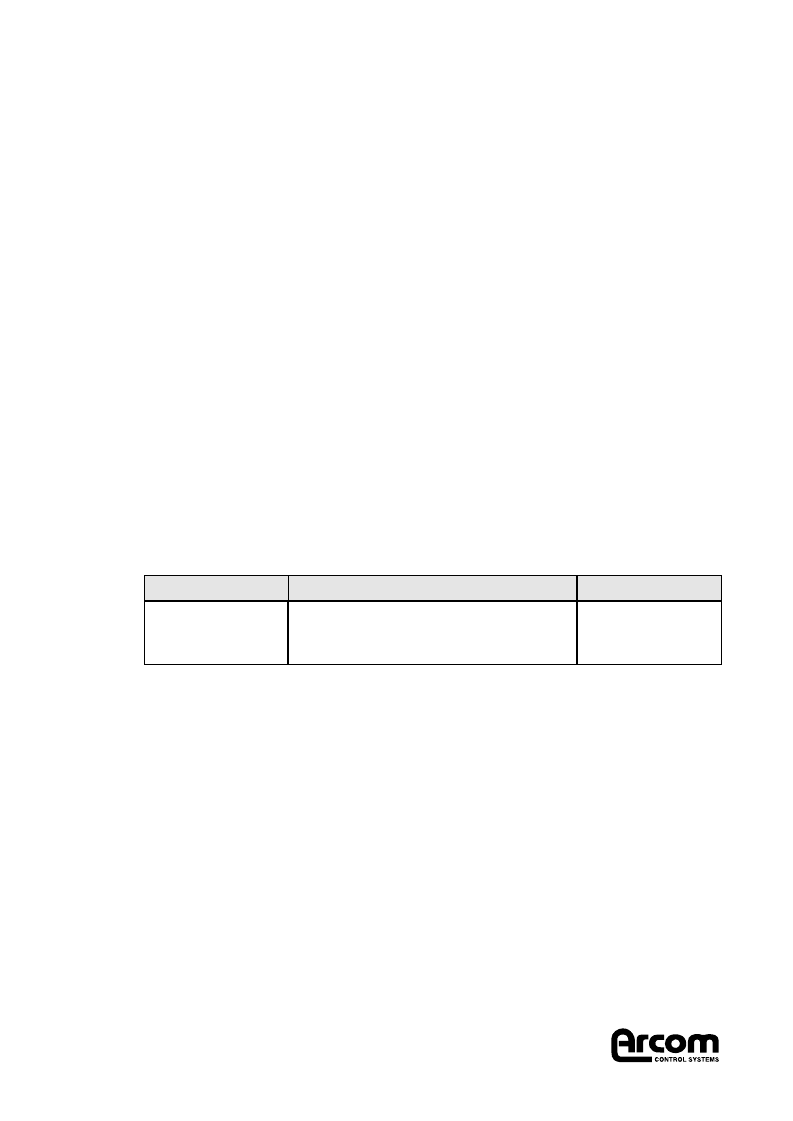- 您現(xiàn)在的位置:買(mǎi)賣(mài)IC網(wǎng) > PDF目錄367810 > PCADADIO-CS PC(ISA)BUS I/O CARD PDF資料下載
參數(shù)資料
| 型號(hào): | PCADADIO-CS |
| 英文描述: | PC(ISA)BUS I/O CARD |
| 中文描述: | 電腦(ISA)總線的I / O卡 |
| 文件頁(yè)數(shù): | 6/26頁(yè) |
| 文件大小: | 393K |
| 代理商: | PCADADIO-CS |
第1頁(yè)第2頁(yè)第3頁(yè)第4頁(yè)第5頁(yè)當(dāng)前第6頁(yè)第7頁(yè)第8頁(yè)第9頁(yè)第10頁(yè)第11頁(yè)第12頁(yè)第13頁(yè)第14頁(yè)第15頁(yè)第16頁(yè)第17頁(yè)第18頁(yè)第19頁(yè)第20頁(yè)第21頁(yè)第22頁(yè)第23頁(yè)第24頁(yè)第25頁(yè)第26頁(yè)

Page 6
2192-09061-000-000
J489 PCADADIO
Operation
Reading from or Writing to the Board
Control of the PCADADIO is achieved by writing to a pointer register and then accessing a data
register to read or write the required function. The pointer register need only be written with a
new value if a different data register is next to be accessed. ADC and DAC data is handled by a
dedicated pair of registers. The board occupies only four bytes of PCbus I/O space. Each time
the board is accessed, the Red LED will flash momentarily.
Base Address Selection
The switches set the address of the lowest of the four bytes of the board control registers (the
base address) and the three remaining bytes occupy sequential addresses above this location in
PCbus I/O space. Therefore, the base address must be set-up on four byte boundaries, i.e SW3
should be set to 0, 4, 8 or C. The address switches should be set to read from left to right (SW1
to SW3) to correspond with the hex switches. For example for address 180hex (the deepest
PCbus I/O base address) SW1 is set to 1, SW2 to 8 and SW3 to 0.
The I/O Pointer Scheme
To access a function on the PCADADIO, you must set-up the ‘pointer register’ to point to it. This
is achieved by writing a pointer value byte to the I/O base address. Once a particular device is
pointed at, it can be accessed by writing/reading the relevant access register. The pointer value
need not be re-written for every access to the same access register.
All control and diagnostic functions, including ADC control, are accessed using the byte (8 bit)
access register located at Base +1. The ADC and DAC data are accessed using the low and
high access registers located at Base + 2 and Base + 3. This feature can be used to optimise
data acquisition using software word access, since this results in two contiguous bus cycles
(Base + 2 followed by Base + 3). There is no need to write a new pointer value before access is
made to read ADC data.
I/O Address
Function
Read/Write
Base
Base + 1
Base + 2
Base + 3
Pointer Register
Diagnostic and Control Access Byte
DAC and ADC Low Access Byte
DAC and ADC High Access Byte
Write Only
Read/Write
Read/Write
Read/Write
相關(guān)PDF資料 |
PDF描述 |
|---|---|
| PCB80C552-4 | 8-BIT MICROCONTROLLER |
| PCB80C39 | SINGLE-CHIP 8-BIT CMOS MICROCOMPUTER |
| PCB80C49 | SINGLE-CHIP 8-BIT CMOS MICROCOMPUTER |
| PCB80C552 | Single-chip 8-bit microcontroller |
| PCB83C652 | 8-BIT MICROCONTROLLER |
相關(guān)代理商/技術(shù)參數(shù) |
參數(shù)描述 |
|---|---|
| PCAF-1 | 制造商:Aeroflex / KDI 功能描述:ATTENUATOR - PCB MOUNT |
| PCAF-10 | 制造商:Aeroflex / KDI 功能描述:ATTENUATOR - PCB MOUNT |
| PCAF-2 | 制造商:Aeroflex / KDI 功能描述:ATTENUATOR - PCB MOUNT |
| PCAF-20 | 制造商:Aeroflex / KDI 功能描述:ATTENUATOR - PCB MOUNT 制造商:Aeroflex 功能描述: |
| PCAF-3 | 制造商:Aeroflex / KDI 功能描述:ATTENUATOR - PCB MOUNT |
發(fā)布緊急采購(gòu),3分鐘左右您將得到回復(fù)。